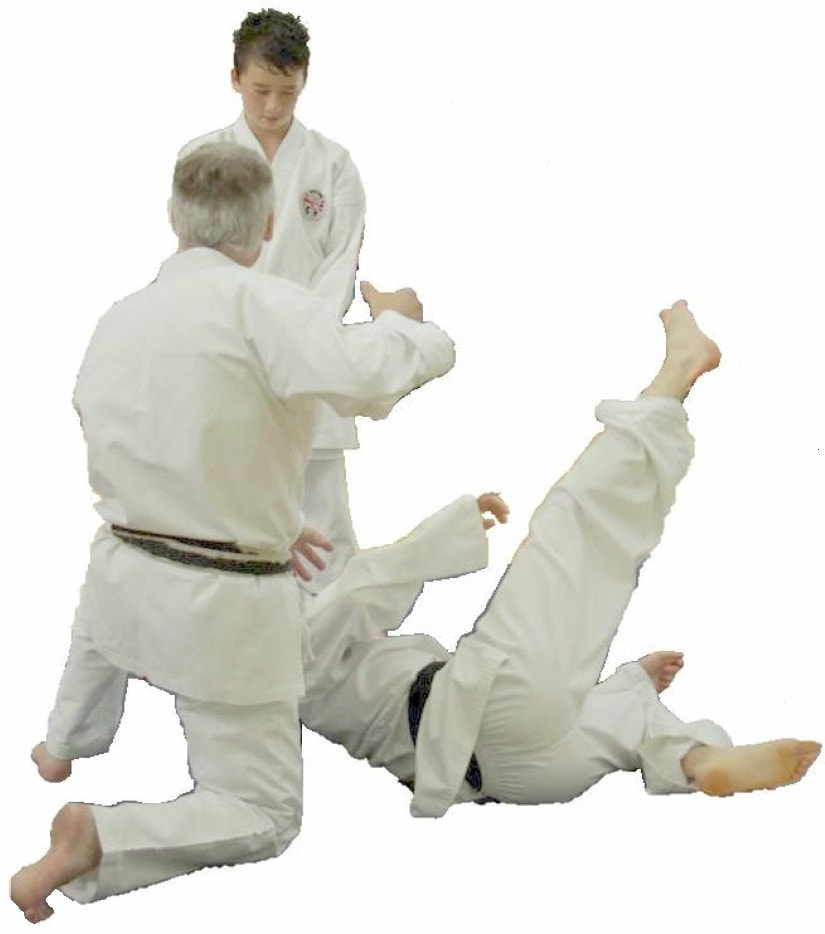Breakfalls in Wadoryu
 GE Swift Hanshi teaching ‘take-down’ technique within Ohyo Gumite Gohonme
GE Swift Hanshi teaching ‘take-down’ technique within Ohyo Gumite Gohonme
Wadoryu does not have throws, but it does have takedowns, which in many cases are considered ’assisted take-downs’. However all take-downs in Wadoryu require a different form of ‘break-fall’, due to the landing on hard-surfaces (traditional Wadoryu does not train on mats); which differs from many of the other ‘sport-type’ mat-impact break-falls, as seen in Judo, MMA, etc.
For Example, when landing to the floor with Yoko-Ukemi, the opposing (break-fall) arm must be thrown downwards and slightly to the side (this forces the energy away from the head and also assists in a ‘rolling’ effect away from centre of the body.). At the same time the body must be slightly turned away with the hip raised; this is to protect the spine and reduce the hip from any harsh contact with the hard surface.
However, it is not advised to ’repetitively’ practise break-falls on hard surfaces, as the student will risk injuring himself over time. So mats may be a start for those who require confidence-building exercises in the first place. Training of the correct falling procedures should be eventually practised on a wooden surface. Great care and caution should always be taken, initially, until we are used to the manoeuvre, in preparation for the harder surfaces.
There are three types of fall, commonly used in British Wadokai, these are:
- Ushiro ukemi – Backward’s fall (used in some Idori)
- Yoko ukemi – Sideway’s fall (this is the most common and also used in some Ohyo-gumite, Kihon-gumite, Idori, Tanto-dori and Muto-dori)
- Mae ukemi – Frontward fall (used in some Idori and Muto-dori)
Gary E Swift 9th Dan Hanshi
